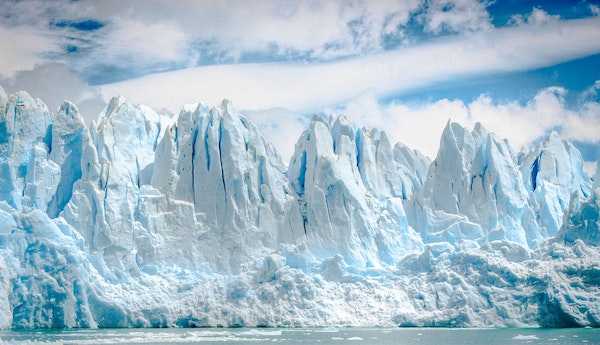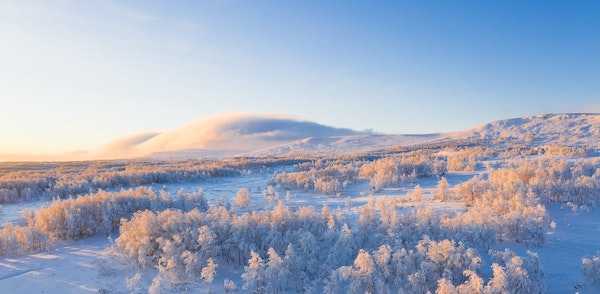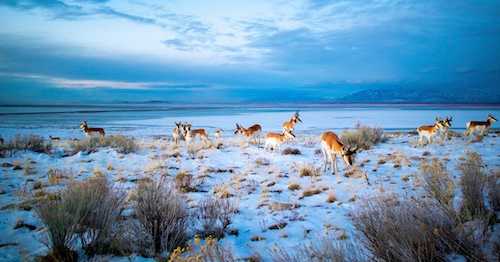FAQ 3: How will climate change affect the lives of today’s children tomorrow, if no immediate action is taken?
The WGII overarching Frequently Asked Questions (FAQs) are an outreach material. They are based on the WGII Report and aim to help to interpret its concepts and findings to a broad audience. This version can still be subject to copyedits and tricklebacks.
Climate change impacts are increasingly being felt in all regions of the world with growing challenges for water availability, food production and the livelihoods of millions of people. We also know that impacts will continue to increase if drastic cuts in greenhouse gas emissions are further delayed – affecting the lives of today’s children tomorrow and those of their children much more than ours. But science is also clear: with immediate action now, drastic impacts can still be prevented.
The scientific assessment in the WGII Report addresses the near-term (up to 2040), mid-term (2041-2060) and the long-term (2081-2100). Today, the latter two milestones may seem far away, but children who were born in 2020 will be 20 years old in 2040 and 80 years old in 2100. The end of the century is less than a lifetime away. Actions taken now to reduce emissions of heat-trapping greenhouse gases drastically and adapt to a changing climate will have a profound effect on the quality of their lives and their children’s lives, as well as their health, well-being, and security. We also have to take into account that by 2050 almost 70% of the world’s growing population will live in urban areas, many in unplanned or informal settlements. As a result, today’s children and future generations are more likely to be exposed and vulnerable to climate change and related risks such as flooding, heat stress, water scarcity, poverty, and hunger. Children are amongst those suffering the most, as we see today.
But what is our children’s future going to look like, if we do not limit global warming to well below 2°C, preferably to 1.5°C, compared to pre-industrial temperature? Based on the Working Group II assessment, we know that global warming is already changing much of the world as we know it. Its impacts will intensify in the coming decades with profound implications for all aspects of human life around the world. Our food and water supplies, our cities, infrastructure and economies as well as our health and well-being will be affected.
For example: children aged ten or younger in the year 2020 are projected to experience a nearly four-fold increase in extreme events under 1.5°C of global warming by 2100, and a five-fold increase under 3°C warming. Such increases in exposure would not be experienced by a person aged 55 in the year 2020 in their remaining lifetime under any warming scenario.
Globally, the percentage of the population exposed to deadly heat stress is projected to increase from today's 30% to 48-76% by the end of the century, depending on future warming levels and location. If the world warms more than 4°C by 2100, the number of days with climatically stressful conditions for outdoor workers will increase by up to 250 workdays per year by century’s end in some parts of South Asia, tropical sub-Saharan Africa and parts of Central and South America. This would cause negative consequences such as reduced food production and higher food prices. In Europe, the number of people at risk of heat stress will increase two- to three-fold at 3°C global warming compared to warming levels of 1.5°C.
With ongoing global warming, today’s children in South and Southeast Asia will witness increased losses in coastal settlements and infrastructure due to flooding caused by unavoidable sea level rise, with very high losses in East Asian cities. By mid-century, more than a billion people living in low-lying coastal cities and settlements globally are projected to be at risk from coastal-specific climate hazards. Many of those will be forced to move to higher ground, which will increase competition for land and the probability of conflict and forced relocation.
Climate change will impact water quality and availability for hygiene, food production and ecosystems due to floods and droughts. Globally, 800 million to 3 billion people are projected to experience chronic water scarcity due to droughts at 2°C warming, and up to approximately 4 billion at 4°C warming, considering the effects of climate change alone, with present-day population. Children growing up in South America will face an increasing number of days with water scarcity and restricted water access, especially those living in cities and in rural areas depending on water from glaciers. As the Andean glaciers and snowcaps continue to melt, the amount of available water decreases as the glaciers shrink or disappear entirely. Countries in Central America will experience more frequent and stronger storms or hurricanes and heavy rainfall, causing river flooding.
Today’s young people and future generations will also witness stronger negative effects of climate change on food production and availability. The warmer it gets, the more difficult it will become to grow or produce, transport, distribute, buy, and store food – a trend that is projected to hit poor populations the hardest. Depending on future policies and climate and adaptation actions taken, the number of people suffering from hunger in 2050 will range from 8 million to up to 80 million people, with the most severely affected populations concentrated in Sub-Saharan Africa, South Asia and Central America. Under a high vulnerability-high warming scenario, up to 183 million additional people are projected to become undernourished in low-income countries due to climate change by 2050.
Africa is the continent with the world’s youngest population (40% of the population are under 15 years old). Here, climate change will significantly increase the number of children with severe stunting (impaired growth and development which often leads to limited physical and cognitive potential), by approximately 1.4 million by 2050 under 2.1°C of warming due to malnutrition. The lack of food and under-nutrition are strongly linked with hot climates in the sub-Saharan area and less rainfall in West and Central Africa. Climate change can undermine children’s educational attainment, thus reducing their chances for well-paid jobs or higher incomes later in life.
The concerning news is: all these projected impacts will not only reduce the prospects of sustainable development, but our Working Group II Report also projects an increase in poverty and inequality as well as increased involuntary migration of people due to climate change. These responses follow expected climate-driven increases in the frequency and strength of regional wildfires, increased floods and droughts, and an increase in temperature-related incidences of vector-borne, water-borne and food-borne diseases such as dengue, malaria, cholera and Rift Valley Fever.
In addition, we now know that multiple climate hazards will occur simultaneously more often in the future. They may reinforce each other and result in increased impacts and risks to nature and people that are more complex and more difficult to manage. For example, reductions in crop yields due to heat and drought, made worse by reduced productivity because of heat stress among farmworkers, will increase food prices, reduce household incomes and lead to health risks from malnutrition, as well as climate-related deaths, especially in tropical regions.
But there is also positive news: all these risks can be reduced substantially by taking urgent action to limit global warming and by strengthening our adaptation efforts – for example by protecting and conserving nature, and by improving planning and management of our cities (for details see FAQ 5). The youth movement, together with many non-governmental organizations, has led to a rising wave of public global awareness of climate change and its life-threatening impacts. To successfully secure our own future and the future of the coming generations, climate risks must be factored into each decision and planning. We have the knowledge and the tools. Now it is our choice to make.


